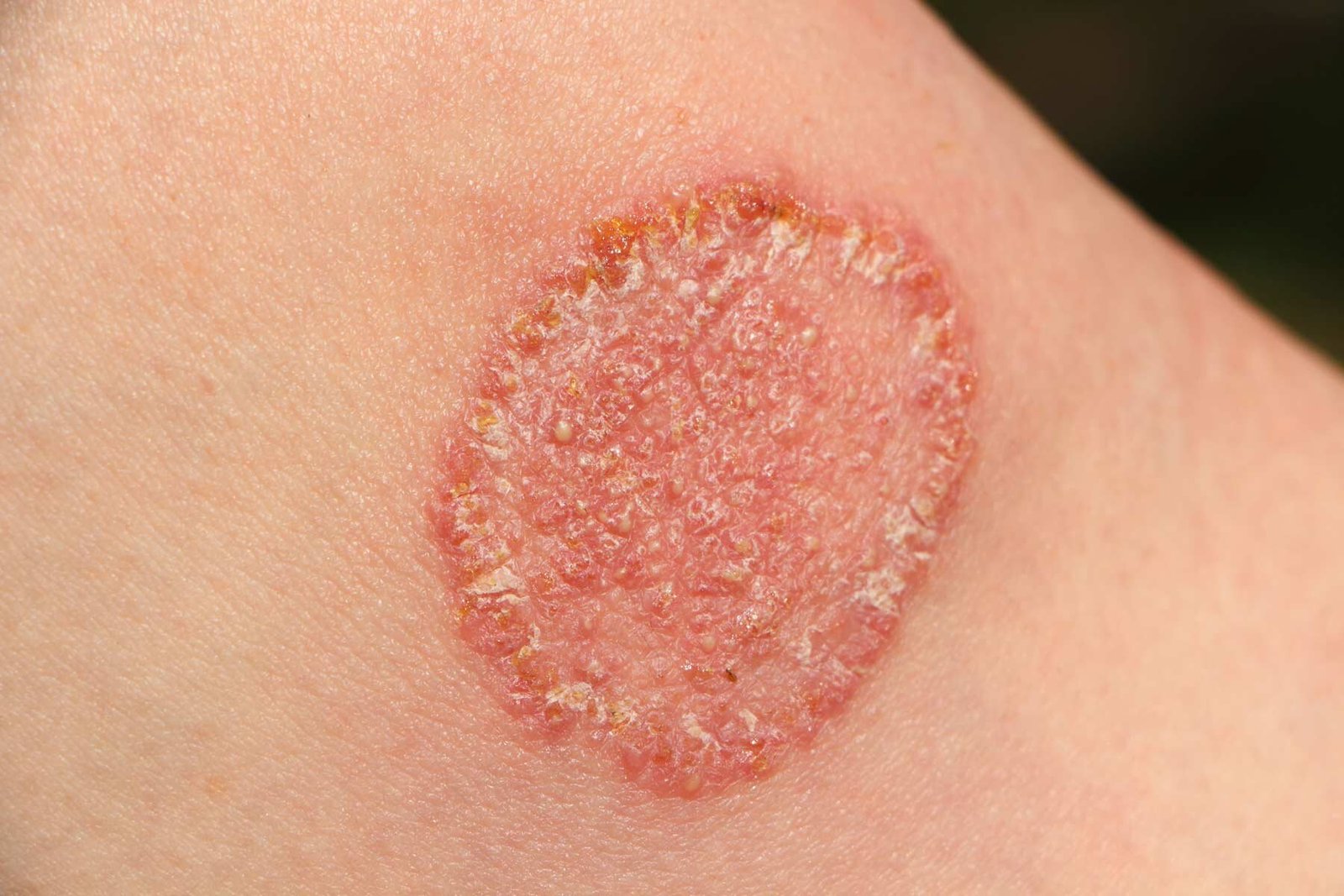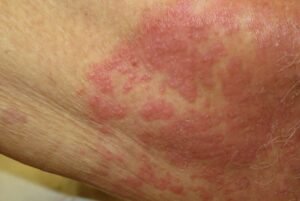How To Cure Fungal Infection On Skin Naturally at Home

Introduction
Millions of individuals worldwide suffer from the uncomfortable and ugly effects of fungus infections on their skin. These diseases, which range from ringworm to athlete’s foot, can be brought on by a variety of fungi that like warm, humid conditions. While prescription and over-the-counter drugs are frequently used to treat fungal infections, numerous natural treatments can also successfully reduce symptoms and encourage healing. We’ll go over the major forms of fungal infections, their origins, and at-home natural treatments for symptom relief and skin health in this complete guide.
Understanding Fungal Infections
As fungi infiltrate the skin’s outer layers, fungal infections—also referred to as dermatophytosis or tinea—occur. The foot, groin, scalp, nails, and other parts of the body are among the places where these infections can strike. Athlete’s foot (tinea pedis), ringworm (tinea corporis), jock itch (tinea cruris), and yeast infections (cutaneous candidiasis) are common forms of fungal infections. Redness, itching, swelling, scaling, and discomfort are possible symptoms.
Causes of Fungal Infections
Fungal infections on the skin can occur due to a number of circumstances, such as:
- Warm and Moist Conditions: Because fungi like warm, humid conditions, public showers, swimming pools, and locker rooms are common places for them to grow and spread.
- Bad Hygiene: Wearing moist or sweaty clothes for lengthy periods of time is one example of poor hygiene that might foster the growth of fungi.
- Weakened Immune System: People who suffer from autoimmune diseases like HIV/AIDS, for example, or who have compromised immune systems, are more vulnerable to fungal infections.
- Specific Medical Conditions: Because they weaken immune function or compromise skin integrity, conditions including psoriasis, diabetes, and obesity might raise the risk of fungal infections.
Natural Remedies for Treating Fungal Infections
Tea Tree Oil
Tea tree oil is a well-known natural treatment for fungal diseases of the skin because of its antifungal qualities. Using a cotton swab, apply a few drops of tea tree oil directly to the affected region.
Apple Cider Vinegar
Acetic acid, which is present in apple cider vinegar, has been demonstrated to prevent the formation of fungus. Using a cotton ball or spray bottle, apply a solution made of equal parts apple cider vinegar and water to the affected region.
Coconut Oil
Lauric acid is an abundant component found in coconut oil that possesses antibacterial effects. Many times a day, apply coconut oil directly to the affected area, paying special attention to areas that are vulnerable to fungal infections. Additionally, useful in reducing fungal infection-related irritation and itching is coconut oil.
Garlic
Allicin, a substance found in garlic, has strong antifungal effects. Juice from a clove of garlic should be crushed and applied straight to the injured area. Additionally, you can strengthen your body’s natural defenses against fungal infections by consuming raw garlic or garlic supplements.
Aloe Vera
Aloe vera gel is a great natural treatment for fungal infections of the skin because of its well-known calming and restorative qualities. Directly apply aloe vera gel to the afflicted region, let it dry, and then rinse with water. To get optimal effects, repeat multiple times daily.

Tips for Preventing Fungal Infections
Practice Good Hygiene
Wash and pat dry your skin on a regular basis, especially after perspiring or coming into contact with surfaces that might be contaminated. Steer clear of sharing personal stuff with others and always use clean towels, socks, and clothes.
Keep Skin Clean and Dry
Particularly in regions like the feet and groin that are vulnerable to fungal infections, keep your skin clean and dry. To absorb extra moisture and stop fungal growth, use talcum powder or antifungal powders.
Wear Breathable Clothing
Select clothing made of breathable, moisture-wicking materials like cotton or bamboo, particularly in hot and muggy conditions. Steer clear of clothes that is too tight since it can trap moisture and foster the growth of fungi.
Avoid Going Barefoot in Public Places
In public areas such as locker rooms, swimming pools, and shared showers, wear shoes or sandals to lower your risk of fungal diseases like athlete’s foot.
When to Seek Medical Attention
For mild to severe fungal infections, home therapies can be helpful; nevertheless, it’s imperative to visit a doctor if:
- Even with at-home therapy, your symptoms continue or get worse.
- You get a fever or have excruciating pain or suffering.
- The infection affects your scalp or nails, or it spreads to other areas of your body.
- You suffer from a compromised immune system or underlying medical problem.

Conclusion
Although fungus infections of the skin can be bothersome and irritating, several natural treatments can help reduce symptoms and encourage recovery. You can lessen your chance of getting these common skin problems by being aware of the causes of fungal infections and taking preventive action. It’s critical to get medical help if your symptoms are severe or persistent to receive the right diagnosis and treatment.
Frequently Asked Questions
What are fungal infections on the skin?
Fungal infections of the skin, also called dermatophytosis or tinea, are brought on by a variety of fungal species and can affect the nails, groin, foot, and scalp. Symptoms include redness, itching, swelling, scaling, and discomfort can be brought on by these infections.
What are the common types of fungal infections on the skin?
Athlete's foot (tinea pedis), ringworm (tinea corporis), jock itch (tinea cruris), and yeast infections (cutaneous candidiasis) are common forms of fungal diseases on the skin. Every form of illness may exhibit distinct symptoms and call for various methods of care.
What are some natural remedies for treating fungal infections on the skin?
Several home treatments are effective in reducing symptoms and accelerating the healing process for fungal skin infections. Among them are: Tea tree oil: Applied topically to the afflicted area, tea tree oil is known for its antifungal qualities. Apple cider vinegar: A diluted solution of apple cider vinegar helps prevent fungal growth and maintain a pH balance on the skin. Lauric acid, which is present in coconut oil and has antibacterial qualities, helps reduce inflammation and itching. Garlic: Allicin, a substance with strong antifungal effects, is found in garlic. You can apply crushed garlic cloves straight to the afflicted area. Aloe vera: The calming and restorative qualities of aloe vera gel can aid in the reduction of fungal infection symptoms on the skin.
How can I prevent fungal infections on the skin?
You may prevent fungal infections on your skin by wearing breathable clothing, washing and drying your skin frequently, not sharing personal belongings, and not going barefoot in public areas like locker rooms and showers.
How long does it take for natural remedies to work for fungal infections on the skin?
Depending on the severity of the illness and personal characteristics like skin type and immune system activity, the length of time it takes for natural treatments to take effect for fungal infections on the skin can vary. Some patients may feel better in a matter of days after beginning treatment, while others might need to use the medication consistently for several weeks before seeing any benefits.

Pingback: Jon Cryer Biography, Height, Weight, Age, Movies, Wife, Family, Salary, Net Worth